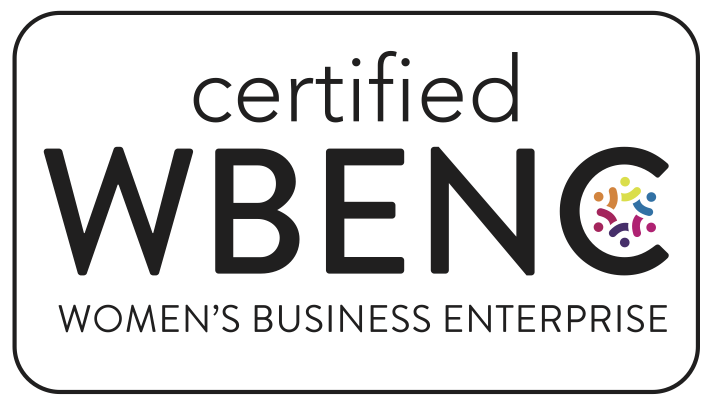More than just a headline, economic inflation is a painful market condition. Its wide-ranging negative impacts can take many forms and affect different populations in different ways. Inflation can be especially worrying for employers, because of the potential it has to negatively influence the workforce.
For example, inflation can shorten the reach of employees’ salaries, making them feel as though they don’t earn as much as they used to. This might force them to take second jobs (which can lead to burnout and exhaustion) or look for higher-paying primary jobs elsewhere. It can also reduce the amount they can contribute to their 401(k)s, which can delay their savings and retirement plans. And of course seeing their salaries diminished can shape employees’ consumer lives as well, as they struggle to deal with the rising costs of groceries, fuel, vacations, and all of their other expenses.
Inflation also increases stress and anxiety levels. In the workplace, this can distract employees from their work and cause their productivity to plunge. This stress can also generate interpersonal tension and conflict in the workplace—and even violence.
With all of this in mind, should organizations communicate with their employees about inflation? Although no company has an obligation to discuss topics that aren’t specific to the business, today’s employees (especially younger workers who are Millennials or from Generation Z) often expect their employers to acknowledge issues that personally affect them both inside and outside the workplace—and in the post-COVID workplace in particular, employees tend to have much higher expectations about the frequency and breadth of their employers’ communications. Therefore, organizations must understand the needs of their workforce.
As a general rule, it always pays for organizations to get ahead of certain issues and be connected, empathetic, and transparent when communicating with employees about them. To maintain strong employee relationships and avoid getting caught off guard, companies should consider preparing a communication plan to address inflation. When a company lets its employees know that it’s aware of and sympathetic to their struggles, employees are more likely to feel heard and valued—and less likely to take any drastic, stress-induced actions. There are several ways that organizations can demonstrate their care and support for their employees.
Promote the company’s employee assistance program (EAP)
An EAP helps employees address a variety of both work-related and personal concerns by opening up efficient, confidential access to professional resources. When communicating with employees about inflation, management and HR should remind them of the company’s EAP’s services and how to access them.
For example, an EAP can help employees manage inflation by connecting them to financial professionals who can help them become more financially stable and learn how to manage the impact of inflation on their income and household budget. Additionally, employees dealing with inflation-induced stress and anxiety can find mental health professionals via their EAPs.
Engage top-priority employees
During times of inflation, employees may be more likely to leave a company in search of higher pay or better benefits. Organizations should be proactive about mitigating this, especially with workers they can’t afford to lose.
First, companies should identify the most mission-critical talent in their workforce and conduct stay interviews with them to find out:
- What they like about the company
- If they have any concerns or recommend any changes
- What they need that they’re not currently getting
- Which scenario(s) would make them more likely to leave
It’s also important to train managers to have regular conversations with their direct reports about what keeps them at the company and what might make them consider leaving. Managers need to be able to spot the indications that an employee is preparing to leave (for example, a sudden change in behavior or an increase in absenteeism).
Support managers
Managers really are the glue that holds everything together in the workplace. But they’re not immune to their own personal distractions and life stressors—particularly those resulting from widespread events (such as inflation).
That’s why companies should put extra effort into supporting their managers and educate them on how to deal with unfocused, anxious employees. Their training should cover topics such as:
- Coaching employees through inflation-induced stress or resolving conflict (including how to roleplay certain scenarios)
- How to conduct stay interviews
- Freeing up space on their calendars so they can schedule regular one-on-one meetings with direct reports and keep a closer eye on what’s going on with employees
- The behavioral cues, tone, and body language to look for when evaluating whether an employee is struggling more than others or might be at risk of leaving the company
Increase company contributions to retirement planning
A 401(k) retirement plan is a significant benefit that a company pays to provide for employees, and it’s important that they know how to take full advantage of it for their financial well-being and future security. When communicating with employees about inflation, management and HR should remind their workforce of the long-term benefits of contributing to their retirement plans and urge them not to give up on their investments or their retirement dreams. To help ease employee stress, a company should consider upping the amount that it contributes or matches to its employees’ plans each month.
Explore other financial incentives
Of course, raising salaries commensurate with inflation is always a popular option with employees. (Note that companies that enact any pay changes should be mindful of internal pay equity and should document in writing all reasons for such adjustments.) From employers’ perspective, though, the cost of living doesn’t necessarily equate to the cost of labor—and it’s the latter that determines salaries. Furthermore, many employers have spent much of the recent Great Resignation raising salaries to attract and retain top talent in a super-competitive job market and are now stretched thin. Even during times of inflation, companies cannot become so desperate to retain employees that they overextend themselves and lose sight of their own financial viability.
If increases to base pay aren’t possible, bonus programs can help employees earn more money and ease their financial stress without having a negative impact on a company’s regular fixed costs.
- Performance bonuses: awarded when an employee achieves a specific goal or objective, or demonstrates a desired behavior in the workplace
- Retention bonuses: used during transition periods to encourage employees to stay
- Sign-on bonuses: given upon hire and not based on performance
- Spot bonuses: awarded as immediate (on-the-spot) recognition for outstanding contributions of individuals or teams.
In addition to reducing employers’ financial risk, bonuses act as a powerful incentive for employees to maintain strong performance despite personal distractions.
Seek out nonfinancial incentives as well
In times of stress, employees tend to fixate on base pay. But by looking at the bigger pictures, companies can often offer other benefits to employees that, though not costly to the bottom line, deliver personal value to employees while increasing their engagement. In addition to employee recognition programs, other options include career development opportunities and additional training, both of which have the added benefit of also making employees more valuable to their employers.
Allow employees to work from home
Inflation may put a damper on many companies’ grand plans for a return to the office following the COVID-19 pandemic. With the high costs of work-related expenses (such as gasoline for commuting, eating lunches out, happy hours, dry cleaning professional attire, and childcare), many employees in roles that are conducive to remote work may resist coming into the office. From their perspective, it doesn’t make sense to spend all that money on unnecessary costs.
Depending on its business model and the specific roles of its workforce members, an organization can easily mitigate employees’ costs by not requiring their full-time presence in the office. Options include allowing them to work from home 100 percent of the time, using some type of hybrid schedule, or letting employees use a flexible schedule (such as a shortened work week) to reduce their days in the office.
Implementing one of these changes has the added financial benefit of reducing company overhead. Just as significantly, though, it aligns an organization with the latest workplace trends and employee expectations and helps it avoid the dreaded postpandemic turnover. These days, it’s not just a better salary that motivates employees to make a move: most employees really want more workplace flexibility and will change jobs to attain it.
A holistic approach
Inflation isn’t something that employees leave outside when they walk through the office door but a major issue that can cause employees significant amounts of stress and anxiety. In that sense it is very much a part of the workplace. By putting into practice some (or all) of the suggestions described above, employers help their employees navigate the challenges of inflation and reduce its negative impacts on the workforce. Through actions that reengage (and retain employees) and calm their concerns, companies can shift their employees’ focus back to work and maintain productivity.

